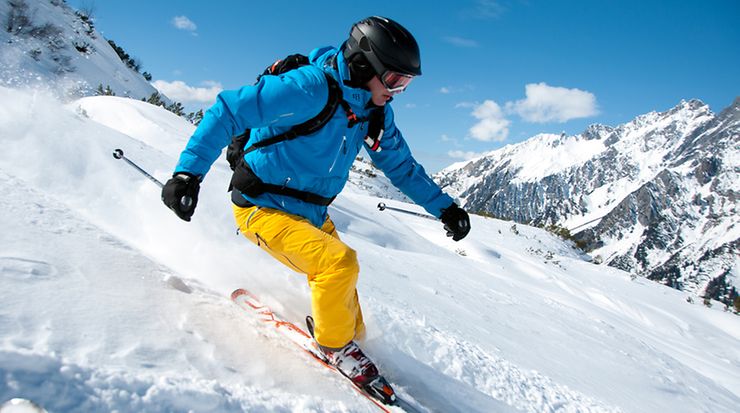Press
Standards and Sport

Anyone who plays sport, whether professionally or in their leisure time, can indulge in physical exercise in the knowledge they can depend on standardization. The most pressing need is to protect limbs from injury, requiring equipment that performs its duty without being a potential source of injury itself. Then the fun can begin, for both competitors and the couch potatoes watching them on TV.
Here a few standards from the world of sport:
Synthetic turf
Whether the name of the game is hockey, football, rugby, tennis or any other: synthetic turf needs to be tough, especially when intended for outdoor use. The European Standard DIN EN 15330 requirements relating to the performance and durability of synthetic turf areas used in sport. No puddles should be allowed to form when it rains, and it goes without saying that the surface should neither stain nor crack while enabling balls to bounce as they should.
Football
Football can be played indoors or on the pitch, and DIN EN 748 lays down the dimensions, materials and design for both. If the goal meets the requirements of the standard it should be able to withstand any attack from would-be goal scorers – and not collapse or fracture as it did in the Champions League game between Dortmund and Madrid in 1998 (unforgettable the commentator’s remark “For anyone just joining us, let me tell you that we are a goal down.”). Besides the stability of the goal in general and the crossbar in particular (after all, this does boast a length of five metres or 7.32 metres, depending on the type) the standard also specifies criteria relating to the breaking strength of the net and the foundations.
Boxing
„… you cannot hit what your eyes don’t see!“, was Muhammed Ali’s creed. However, if boxers in the ring fail to see something coming at them they can quickly get hit themselves. DIN EN 13277-4 takes a stand on the design of the field of vision of head protectors for martial arts. Openings for ears are also important, for hearing and to avoid damage due to air pressure when ears are punched.
Inline skating
Standardization finds all types of skates OK, whether these are soft or hard boots, speed, street or aggressive skates. What matters is the safety of roller sports equipment, with DIN EN 13843 covering its design and the properties of protruding edges and parts, binding elements, chassis, starting and/or braking devices and self-locking fixings. Should it come to a fall, the right protection is crucial. Elbows and other joints are complex entities deserving special attention. Requirements relating to safe and ergonomically correct protectors are contained in DIN EN 14120. The standard also demands that the protectors themselves are particularly durable.
Skiing
A day on the slopes can be even more fun if skiers are sure their equipment complies with international standards and ski bindings are properly adjusted (DIN ISO 9462: Alpine ski bindings – Requirements and test methods).
Bicycle racing
Racing bikes for use by non-professionals at high speeds on normal roads must have clearly defined characteristics and comply with high safety standards. The tyres of a racing bike to DIN EN 14781 must be not more than 28 millimetres wide, and its braking path at a speed of 25 km/h must be not more than 6 metres when both brakes are applied.
School gymnastics
Anyone wanting to jump over the horse in the school gym without showing themselves up in front of Mandy from Class 5b will be glad to be able to use a springboard. With its requirements on dimensions, materials, construction and elastic properties, DIN 7915-1 gives springboard manufacturers a headstart and makes for a strong and safe piece of gymnastic equipment.
Sailing regattas
Life jackets differ from swimming learning aids in that they do not presume any swimming motions on the part of the wearer. Instead they are expected to provide the necessary buoyancy themselves, giving wearers a chance of survival even if they become unconscious or suffer from complete exhaustion. Internationally standardized life jackets for offshore use conforming to DIN EN ISO 12402-2 are made of a particularly buoyant material that is capable of supporting not only persons with their clothes but also the weight of any tools or other special equipment they may be carrying.
At the very least, they are made of retroreflective material and are provided with a whistle and lifting loop.